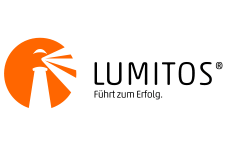Um alle Funktionen dieser Seite zu nutzen, aktivieren Sie bitte die Cookies in Ihrem Browser.
my.chemie.de
Mit einem my.chemie.de-Account haben Sie immer alles im Überblick - und können sich Ihre eigene Website und Ihren individuellen Newsletter konfigurieren.
- Meine Merkliste
- Meine gespeicherte Suche
- Meine gespeicherten Themen
- Meine Newsletter
254 Infografiken
rss| Sie können Ihre Recherche weiter verfeinern. Wählen Sie aus dem linken Bereich passende Suchfilter aus, um Ihre Ergebnisse gezielt einzugrenzen. |
The colours in fireworks stem from a wide variety of metal compounds – particularly metal salts. ‘Salt’ as a word conjures up images of the normal table salt you probably use every day; whilst this is one type of salt (sodium chloride), in chemistry ‘salt’ refers to any compound thatcontains ...
This graphic looks at the colour of various metal and metalloid ions that occur during flame tests. Most people probably remember doing this experiment in school chemistry lessons, if not with the full range of ions shown here, but for the uninitiated a brief explanation of the origin of the ...
This graphic looks at the colours of transition metal ions when they are in aqueous solution (in water), and also looks at the reason why we see coloured compounds and complexes for transition metals. This helps explain, for example, why rust (iron oxide) is an orange colour, and why the Statue ...
Sodium Hydroxide & Ammonia Precipitates
This graphic, on the other hand, looks at how transition metals (and some non-transition metals) can be identified by the precipitates they form with sodium hydroxide and ammonia solutions. I’m going to keep the explanation of the reasons for the colour changes and precipitates fairly simple ...
The Chemistry of Paint
The latest in the Colourful Chemistry series looks at the inorganic compounds that give many paints their colours. This shows a limited selection of the most common compounds, and there are many others; there are also a large range of organic based pigments, which aren’t discussed ...
There are a wide range of gemstones used in jewellery, with each having its own characteristic colour – or, in some cases, a range of colours. The origin of these colours has a chemical basis, and the precise colourcan vary depending on the chemical composition of the gemstone. Interestingly, ...
Matches, as it turns out, have been around for a long time. Sulfur-based matches are mentioned as far back as the 1200s in texts of the time, and in the 1600s a process involving drawing sulfur matches through dried phosphorus-soaked paper was devised. However, the friction matches we’re used to ...
Coloured glass is something that’s commonplace in our lives, from the green ofwine and beer bottles, to the red, yellow, and green of traffic lights. The origin of these colours is something we don’t give a lot of thought to, but a range of different elements are responsible. This graphic takes ...
Limescale is a substance you’ve undoubtedly encountered, be it clogging up your kettle, or building up on your bathroom surfaces. But how does it get there in the first place, and how do limescale removers work to get rid of it? Those are the questions this graphic aims to answer.
Element Infographics
The final elements infographic looks at the Transactinides. These elements are all synthetically produced, and do not occur naturally; as such their applications are minimal, and their chemistry relatively unknown. Hence this graphic looks more at their general properties, and at some of the ...
Sie erhalten passend zu Ihrer Suche die neusten Suchergebnisse per E-Mail. Dieser Service ist für Sie kostenlos und kann jederzeit abbestellt werden.













